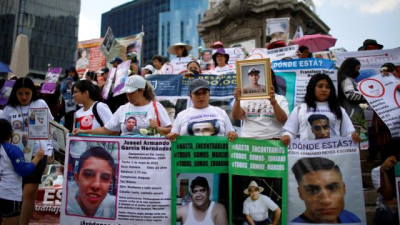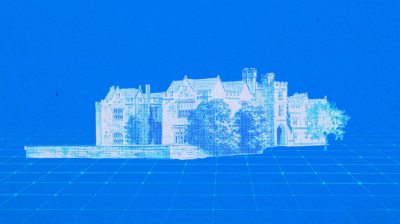Rumbling on the East Coast: A Prelude to the Big One?
The recent 4.8-magnitude earthquake that jolted the New York City area has raised urgent concerns among experts about the city's readiness for a potentially catastrophic seismic event. With New York City's infrastructure not designed to withstand a major earthquake, preparations are deemed crucial to avert a possible disaster.
According to the New York City Area Consortium for Earthquake Loss Mitigation (NYCEM), the region has experienced thousands of earthquakes with magnitudes of 2.0 or greater over the centuries. There's a significant probability—ranging from 20 to 40 percent—of a 5.2 magnitude earthquake occurring within the next 50 years. The consequences could be dire, with estimates suggesting that even a moderate event could result in over a thousand deaths and numerous simultaneous fires, overwhelming the region's emergency response capabilities.
Structural geologist Folarin Kolawale, from Columbia University, emphasizes the importance of heightened preparedness. He warns that historical events and the recent quake indicate the potential for significant seismic activity in the area. Kolawale advocates for fortifying buildings and tunnels and improving earthquake monitoring systems to mitigate future risks effectively.
As the digital ticker tape board in Times Square flashes news of the recent quake, it serves as a reminder of the urgent need for proactive measures to safeguard New York City against the looming threat of a major earthquake.
Friday's seismic event, originating near the Ramapo Fault in New Jersey, sent ripples of concern across the region, situated roughly 50 miles west of New York City and 60 miles north of Philadelphia, as reported by the United States Geological Survey (USGS). With its epicenter 2.9 miles below ground, the quake struck at 10:23 a.m., prompting a delayed emergency alert from New York City officials at 10:49 a.m., leaving residents to rely on social media and word-of-mouth for early warnings.
Although there were no reports of major damage or injuries, the tremor sparked conversations about seismic preparedness. Mayor Eric Adams urged New Yorkers to resume their daily routines, despite a minor 2.0-magnitude aftershock near Bedminster, New Jersey, the location of a golf club owned by former President Donald Trump. Structural geologist Folarin Kolawale emphasized the need for heightened vigilance, stressing the importance of monitoring fault lines and smaller seismic events closely.
While the 4.8 magnitude quake falls short of being labeled a "big one," Kolawale cautions that any seismic activity above magnitude 5 warrants significant attention. The event, occurring during Kolawale's lab meeting, served as a stark reminder of the seismic potential lurking beneath the region's surface. Despite its relatively mild impact, Kolawale highlighted its significance as the most substantial quake in the area since the 1884 event, which registered a magnitude of 5.3.
The seismic history of the region reveals a pattern of smaller earthquakes, often unnoticed but not uncommon. Instances like the recent 1.7-magnitude quake in Astoria, Queens, and others dating back to 2001 around Central Park underscore the persistent seismic activity in the vicinity. Since 1957, the USGS has recorded numerous earthquakes within a 250-mile radius of New York City, shedding light on the ongoing seismic dynamics that warrant continued monitoring and preparedness efforts.
For Folarin Kolawale, the recent series of smaller earthquakes serves as a stark reminder of the looming potential for a more significant seismic event. As New York City and parts of New Jersey grappled with the aftermath of a 4.8 magnitude earthquake, Kolawale highlighted the region's susceptibility to larger tremors due to its significant fault lines. The Ramapo Fault, stretching approximately 55 miles from Pennsylvania through New Jersey into Rockland County, poses a substantial risk, with smaller faults branching off from it. Kolawale noted that ruptures on these smaller faults could potentially trigger more substantial earthquakes on the main fault lines.
While a 4.8 magnitude quake may seem mild compared to California's seismic history, where such events are relatively common, it remains a noteworthy occurrence for the New York area. Geotechnical engineer Magued Iskander, of NYU's Tandon School of Engineering, reassured that existing structures in New York City were likely not significantly affected by the recent quake. Iskander explained that while structures may withstand earthquakes up to a certain magnitude, there's a critical threshold beyond which failures become inevitable. As he cautioned, structures designed before modern building codes may be particularly vulnerable to stronger seismic events.
The aftermath of the earthquake saw scenes of residents and police gathering outside structurally damaged homes in Newark, New Jersey, highlighting the importance of preparedness and proactive measures to mitigate potential risks. The seismic activity serves as a wake-up call for communities to assess their readiness and reinforce structures to withstand future earthquakes effectively.
As seismic concerns loom over New York City, discussions around building resilience and preparedness take center stage. Magued Iskander, of NYU's Tandon School of Engineering, sheds light on the pragmatic challenges of retrofitting existing structures to meet earthquake resistance standards. While newer buildings adhere to updated building codes, retrofitting every existing structure remains unfeasible, Iskander asserts. He emphasizes the continuous evolution of building codes, often influenced by seismic events in regions like California, driving advancements in earthquake protection measures.
Iskander underscores that the recent 4.8 magnitude earthquake will unlikely prompt immediate changes to building codes, given its relatively small impact compared to seismic events elsewhere. He points to recent earthquakes in Turkey and Taiwan as more relevant benchmarks for shaping building codes. Despite the evacuation of his wife's office during the quake, Iskander personally downplays the level of concern, highlighting a sense of confidence in existing structural integrity.
In contrast, Folarin Kolawale's reaction to the earthquake illustrates a different perspective. While not frightened, he describes feeling "excited," reflecting his deeper engagement with seismic research. Kolawale emphasizes the pre-stressed nature of nearby faults, underscoring the potential triggers for earthquakes, both natural and anthropogenic.
Looking ahead, Kolawale stresses the importance of gathering more data, enhancing monitoring systems, and conducting comprehensive studies to improve seismological forecasts. However, he acknowledges the challenges in securing funding for such initiatives, highlighting the inertia often observed until a significant seismic event occurs.
As New York City grapples with its seismic vulnerabilities, the discourse between pragmatism and proactive preparedness continues, underscoring the imperative of ongoing research, monitoring, and community engagement to navigate the unpredictable terrain of earthquake risk.
In conclusion, the recent seismic activity in New York City has sparked crucial conversations about earthquake preparedness and resilience. While experts like Magued Iskander underscore the pragmatic challenges of retrofitting existing structures and the incremental evolution of building codes, others like Folarin Kolawale emphasize the importance of proactive measures, such as gathering more data and enhancing monitoring systems. The contrasting perspectives reflect the complex landscape of seismic risk management, where balancing practical limitations with ambitious goals remains paramount. As the city navigates its seismic vulnerabilities, ongoing research, community engagement, and a commitment to preparedness will be essential in building a safer and more resilient future against the unpredictable threat of earthquakes.







